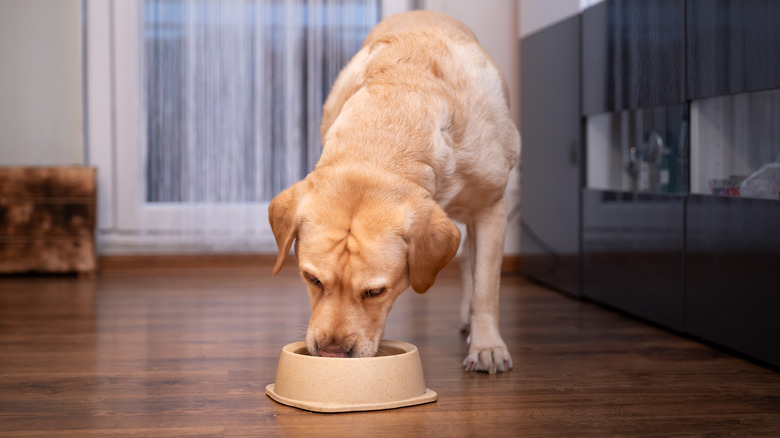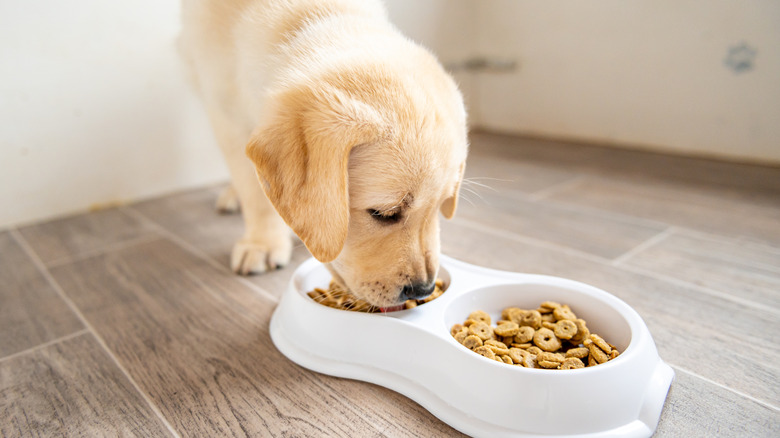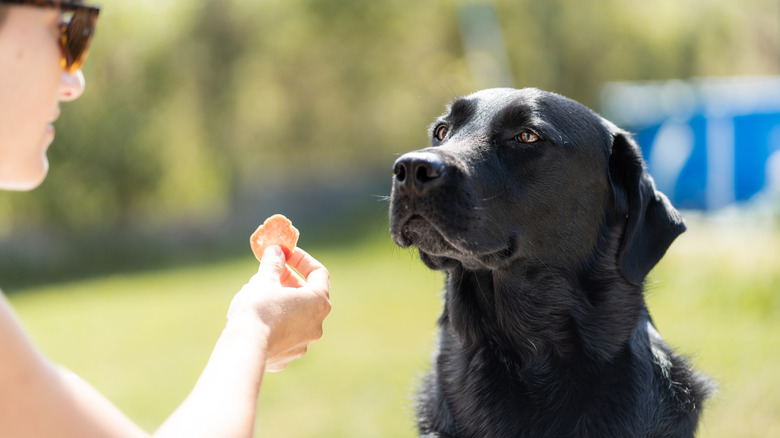How Much Do I Feed A Labrador Dog?
The Labrador retriever, commonly known as the Lab, is an extremely beloved dog breed in the United States due to their easy-going temperament. Along with being known for their sweet behavior and fun personalities, Labs are also notorious for having an extreme liking to food and might scarf down their meals if they aren't placed in something like a slow feeder. Because of this, it might be difficult to determine how much to feed your lab, as they might still act hungry even when they've received a proper amount of food. Of course, you don't want to overfeed them. Depending on your Lab's age, size, and activity level, their dietary needs need will vary.
To identify how much to feed your Lab, first determine if they are at a healthy weight that should be maintained. If this is the case, consult the feeding guide on their food to see the amount it recommends based on your Lab's weight. Note that you don't need to (and probably shouldn't) follow it exactly. If your Lab is highly active, they might require more food than the label says, or if they are on the lazier side, you may need to cut back. If you aren't sure if you're feeding your pup an adequate amount, talk to your vet, as they can give you the best feeding recommendations for your specific pup.
How much to feed a Labrador puppy
How much you feed a Labrador retriever puppy is going to differ from the amount you feed an adult lab. For starters, Labrador puppies will eat more than adults, as they need energy to grow. Puppies should also feast on specifically formulated puppy food, as it has the extra calories and nutrients they need. When it comes to the amount to feed your Labrador puppy, it can vary depending on their current body condition.
Look at the feeding guidelines on the back of your Lab's puppy food to start, but don't take its word for it. Since Labs love to eat, your puppy may start to become overweight if they are eating too much. If this is the case, you may need to cut back slightly on the amount of food you give them in order to prevent overfeeding. However, don't cut back on the total number of meals. It should also be noted that after a puppy is spayed or neutered, they won't need to eat as much anymore. The best way to determine how much to feed your Lab puppy is talking to your vet, as you want to make sure they are getting the nutrition they need while not being overfed.
How much to feed a Labrador to lose weight
If your Lab is passionate about food, there's a chance they could be on the heftier side. If this is the case, there are ways to go about changing their diet to help them lose weight. Along with altering how much you feed them, you are also going to want to increase your Lab's exercise to help them burn off those extra calories. Once again, you should always consult your vet before changing your Lab's diet.
If you want your Lab to lose weight, you shouldn't rely on the feeding guidelines on their food, as they are typically based on what is required for an active dog. There is no set amount a Lab should be fed to lose weight, as every dog is different. Figuring out your Lab's body condition is one way to determine how much you might need to cut back on their food, but again, consult a veterinarian for advice. There are multiple other factors that play into a dog's diet, and only your vet can provide the best advice for your particular situation.
Along with cutting back on food, if your Lab is a treat lover, you should also factor these into their diet. Treats shouldn't account for more than 10 percent of your dog's daily caloric intake, per the AKC. If your Lab needs to lose weight, consider cutting back on treats or switching to healthier options such as carrots or blueberries.


